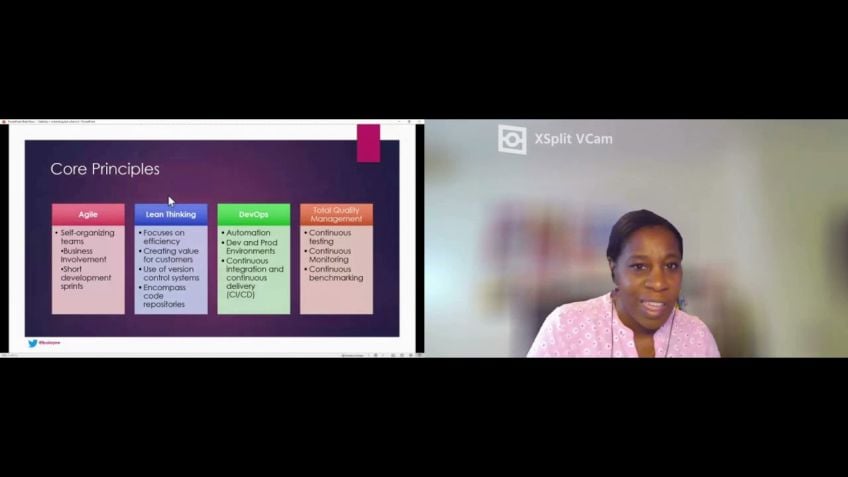Data-Driven Decision Making by Roja Boina
Importance of Data Driven Decision Making in Organizations
Good morning, my name is Roger and as an engineering advisor for the healthcare domain, I work closely with data. Today, we'll discuss the significance of data-driven decision making and its role in present day organizations.
Every day, we generate around 2.5 quintillion bytes of data (2.5 followed by 18 zeros!) irregardless of the size of the organization. Making decisions based on this accrued data can help avoid costly mistakes that would require significant effort to rectify later on.
Examples of Data-Driven Decisions
Some prominent examples of data-driven decision making include Google's leadership development program in 2007 and Amazon's recommendation engine.
- Google's Project Oxygen: In an internal project dubbed 'Project OXY', Google surveyed around 10,000 employees to identify the traits of high-performing managers. The results, based on data analysis, were used to develop a leadership program and train future managers.
- Amazon's Recommendation Engine: Amazon utilises data based on an individual's purchasing habits to recommend products. In 2017, it was discovered that 35% of Amazon's sales were a direct result of this recommendation engine.
Formulating a Strategy for Data-Driven Decisions
Now that it's clear how industry giants use data-driven decisions to enhance their profits, let's delve into how you can develop a strategy to drive your own decision making.
Identifying the Problem
The first step in a data-driven decision making strategy is to clearly identify the problem you want to solve. Understanding the focus of your investigation is crucial before diving into the data.
Identify Key Areas
Once you understand the problem, the next step is to identify the key areas of your business that are relevant. This approach will yield the best results as you navigate through various sectors, such as finance or operations.
Data Collection and Analysis
With a clear problem and area of focus in place, you can then start to collect and analyze your data. During this stage, it's crucial to acknowledge both your internal data resources and external data that may be necessary for your research.
Data collection and analysis can start from a simple Excel spreadsheet and evolve to use a larger, more powerful analytical platform to share data and results across your organization.
Investing in the Right Technology
Investing in the right technology is a key step in the data-driven decision making process. The choice of technology should be based on factors such as the skill set of your team, the volume of data, and the type of data you're dealing with.
Using Visual Presentations
Visual presentations are a powerful way to communicate your findings. From bar charts to pie charts, selecting the right visual aid can make it much easier to communicate your data.
Turning Insights into Action
Last but not least, the most important step is turning your insights into action. Once the problem has been identified and understood, the knowledge gained from the analytics should be transformed into practical actions to resolve the presenting issue.
In conclusion, these are just some of the steps and strategies involved in driving a data-driven decision-making process. Any questions are welcome at this point.
Video Transcription
Hi, good morning. So my name is Roger and I am an engineering advisor for a healthcare domain and I work as basically my roles and responsibilities aligned with that of data engineer. So today, I will be talking about the importance of data driven decision making.So every day we have around like 2.5 quintillion bytes of data that is being generated, which is actually 2.5 followed by 18 zeros. So that's the volume of data that is generated each day. So be it like a larger or smaller organization. It is quite important to make the decisions based on the data. So the uh important question should be like, why, why should we make our decisions based on the data? Mm As humorous as it sounds just to avoid the costly mistakes, the mistakes that, which would be like really costly uh would be to rectify the la in later. So we it is always suggested to make our decisions based on the data. So some of the good examples for data driven decision making is uh Google's leadership development program in 2007. Uh Google has conducted like an internal project called project OXY where they wanted to actually check uh the what are like the traits of a high performing manager within the Google.
And they conducted like a survey for around 10,000 employees and they were able to identify what are like the 10 traits that within the Google people thought that that manager was particularly high performing. So that was basically based on the people analytics. They did that data analysis and Google was able to develop a program or you know, uh later like train the following upcoming managers and set up a program for it and also like increasing Amazon sales. So Amazon by themselves has like a recommendation engine which works on the data based on the kind of products that an uh person is purchasing each time and then they provide like your suggestions for you, like what kind of uh products that you can purchase later. So in 2017, uh it was discovered that 35% of the sales were only based on the recommendation engine that Amazon has developed for their uh decision making. So since we knew like, you know how like some of the big tech companies use the uh decision making based on data driven, you know, to drive their profits, so we can basically go ahead and see like what is the strategy, how we can uh set up like a strategy for us to make the decisions, to make the data driven decisions So the first important thing should be like setting up or knowing the what is the problem that you wanted to solve?
So for example, let us say, uh I wanted to like, know what are the reason why my revenue has been less for the last three years? Or I wanted to know what is the baseline I should set for my product. So the purchases keeps increasing. So I should understand or one should be able to understand what is the focus that they wanted to know or what is the kind of problem that they wanted to solve before diving into the data and identifying the key areas. For example, each company has multiple kind of areas that they work on beat, like finance beat on operations. So we need to understand which area is better to identify and focus on. So that would drive the better results. And after that, once you are aware of what is the problem that you wanted to solve and what is the area that you wanted to focus on? Then you should start analyzing and collecting your data based on your area of interest and area of focus and the problem that you are trying to solve. So while you're trying to collect and analyze the data, you should also be able to identify what is the data that you have internally and what is the data uh that is not available for you. Uh the data that you would need externally.
So that is a metric that you should try to identify and collect and also uh collecting data and analyzing can be as simple as you could start it from uh an Excel. And it can go like using a big like analytical platform that you could use and share your data analysis and results with your team and within your organization. And one of the key uh key thing is investing your investing in the right technology. So one should be able to identify like based on the size of the organization that they have and the uh skill set of their team. What is the right kind of technology that they would be used to also the analyze the data and also to store the volume of the data that they have. So when investing in the right technology, there can be like various factors that can be considered. One could be like your uh team skill set, one could be like the volume of your data and one could be like the kind of that data that you're getting in and where do you want to store it? So all these factors should be considered when investing in the technology and using the right visual presentations, let us say once I'm able to collect my data and identify.
Um so I have identified like I have seen like a set of problem in my sales from this year to this year and I have identified like what is the solution or the reason for it after I have analyzed the data. So it is always important to communicate your data and the insights that you have got with you, right? Visual presentations for the kind of data that you have, it can go on based on your bar charts or pie charts, bar graphs, line graphs, whatever it is. So it is depending upon your right, selecting the right visual presentation would make it very easier to communicate your data. And the last, but the most important step is turning your insights into an action. So let us say once you're able to identify what is the reason that is driving you the problem. It is very important like based on your insights that you have got to turn it into the action. So yeah, these are some of the important steps or you know, the strategy that you can use for driving a data driven decision making. So I think pretty much this was my presentation. And from here, I will take like any questions that we have.




